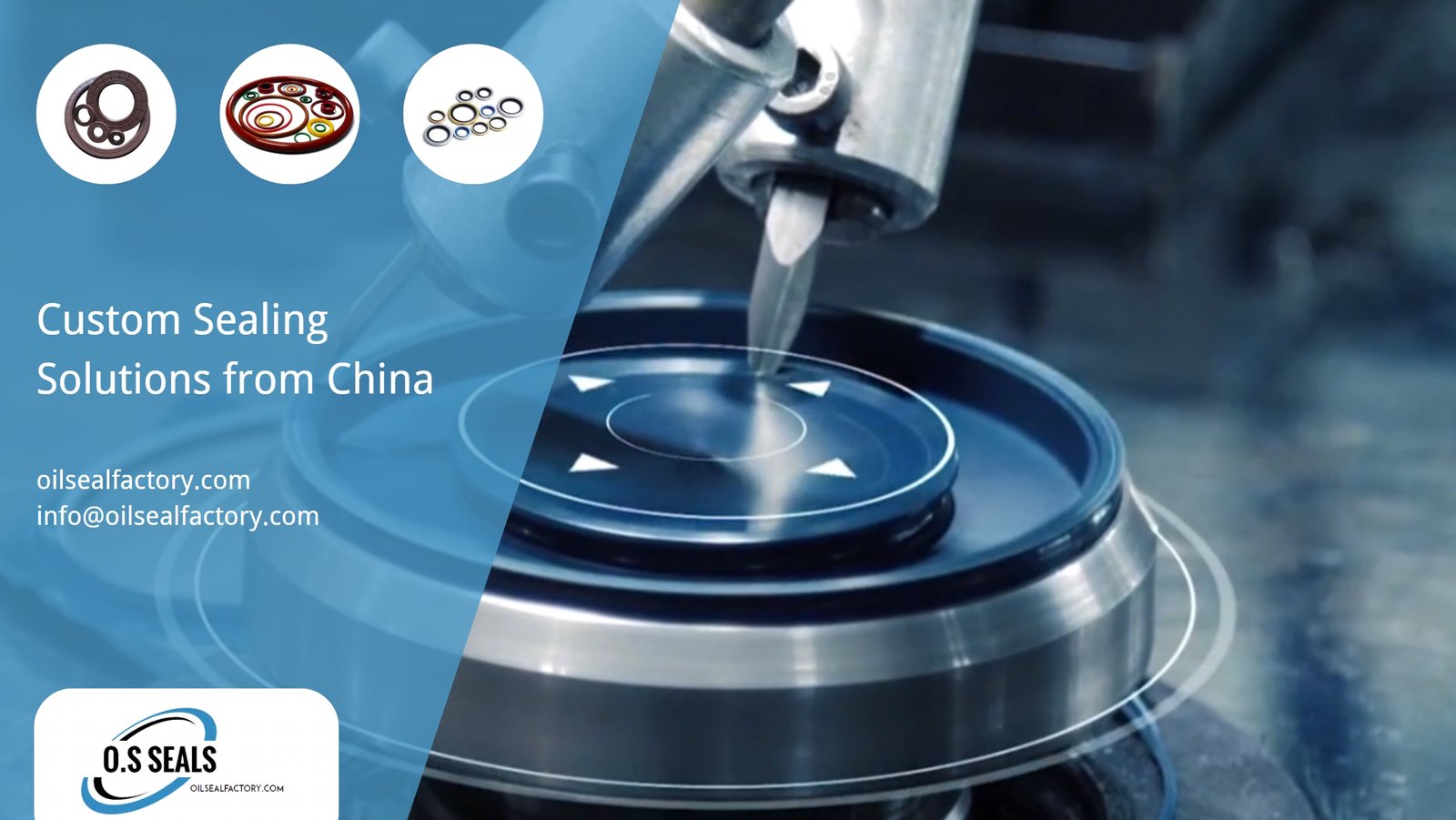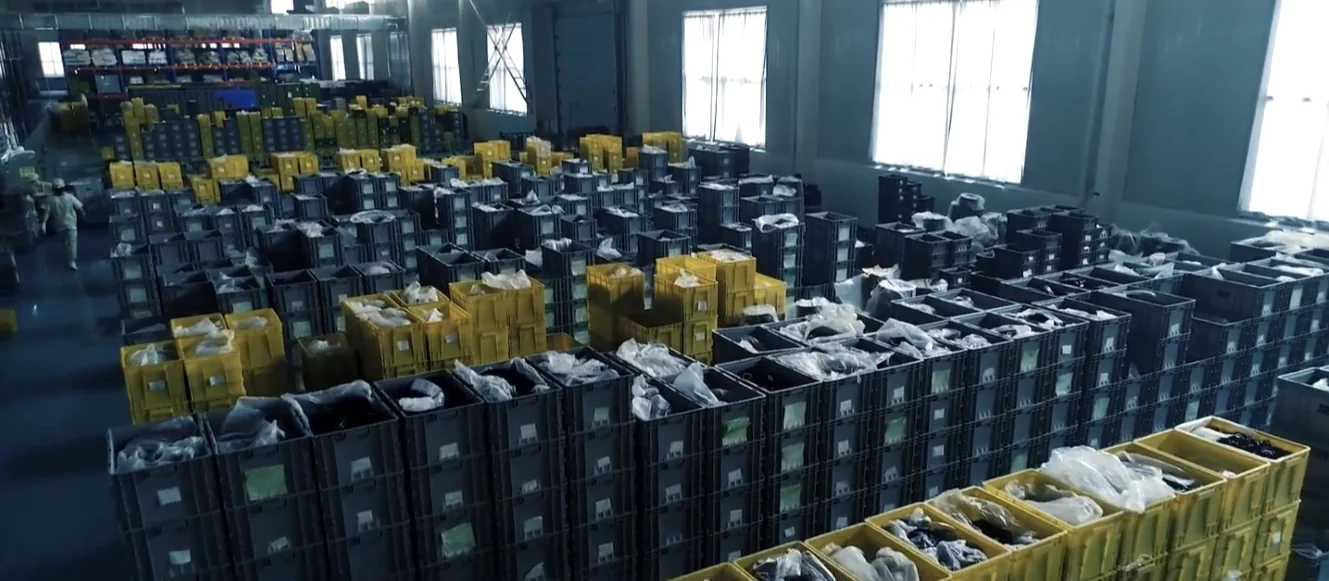1. Speed
Speed is a necessary factor that should be considered when selecting seals. We divide the speed into three levels:
Low speed 0 ~ 0.8m/s;
Constant speed 0.8 ~ 2m/s;
High speed 2 ~ 5m/s;
The limit of speed is limited by temperature because the increase in speed is ultimately attributed to the increase of lip temperature, lip temperature tolerance.
We should consider the stability of equipment operation and whether the crawling phenomenon when the speed of motion is very low (0.03 m/s).
The lubrication oil film may be destroyed, when the speed of motion is very high (> 0.8 m/s). The service life will be greatly reduced due to not good lubrication and friction heating seal.
Suggest PU or rubber, plastic seals at 0.03 m/s ~ 0.8 m/s speed within the scope of work is good.
Several factors to pay attention to in the ultra-high-speed state:
(1) The metal material performance and friction surface roughness
(2) The cylinder rod static or dynamic different degree of bearing
(3) The temperature of the pion
(4) If the lip is lubricated
2. The temperature
The low temperature will make the lips of polyurethane or rubber seals freeze and become brittle and brittle, reducing elasticity, causing leakage, and even the whole seal becomes hard and brittle.
The high temperature will make the seal volume expansion, soft, resulting in the movement of the seal friction resistance rapidly increased and reduced pressure capacity.
It recommended that polyurethane or rubber seals continuous working temperature range of -10° C ~+80° C. Increased speed, poor surface roughness, and poor lubrication can produce frictional heating, raising the temperature of the lip beyond that of the meson.
3. Work stress
The cylinder has starting pressure, working pressure, and impact pressure. The minimum starting pressure is set according to the cylinder diameter and service pressure conditions.
Low – pressure work must choose low friction performance, small starting resistance seals. Polyurethane seals are not suitable for work under 25bar.
Under high pressure, it is necessary to consider the deformation of the seal under pressure, and to prevent extruding the supporting ring. Special requirements are also required for groove machining accuracy and clearance. There are also strict requirements for the roughness of the symmetrical arm surface on both sides of the groove and the edge Angle of the step.
Besides, different seals materials have different optimal working pressure range. The optimum pressure range for polyurethane seals is 25 to 315bar. High strength PTFE backrest rings and unique lip design can be chosen to increase the compressive strength.
The effect of temperature and pressure on sealing performance is interrelated, so comprehensive consideration should be made.
4. Work mesons
In addition to strictly following the manufacturer’s recommendations for working media, it is essential to keep working media clean.
Oil aging or contamination will not only cause component failure in the system but also accelerate the aging and wear of seals. The dirt can also be scratched or embedded in the seal. The residual air in the oil cylinder will be burnt or even carbonized by high temperatures due to high-pressure compression.
To avoid this situation, in the initial operation of the hydraulic system, exhaust treatment should be carried out. The hydraulic cylinder should also be in low-pressure slow operation of a few minutes, confirmed that the air has been discharged from the cylinder before working.
5. Sideload
To ensure that the cylinder in the working maximum load, no lateral load, the cylinder in the design, processing to take into account the heavy load of the state of the “not coaxially” on the cylinder, the impact on the seal.
If it is an engineering mechanical cylinder, it is recommended to design the piston as a cambered piston with at least four guide belts. Two thicknesses of guide belts are used. The thicker guide belts are placed on the left and right sides of the piston. Choose the “B” width as the best guide bandwidth. Metal rings may be used if necessary. The cambered plunger in the occurrence of off-loading can prevent the occurrence of a tension cylinder. In the design of industrial heavy-duty and long-stroke oil cylinders with fixed cylinder structure, the piston is designed with long size straight column piston to facilitate guiding and reduce off-loading. Besides, at least six guide belts should be used in the cylinder head. The piston should have more than four guide belts near the cylinder rod end, and the other end of the piston should have two guide belts. The service life of the cylinder depends on the guide belt fit clearance and bearing capacity, which seriously affect the seal performance.
6. Pressure shock
Many factors produce pressure shock. For example, when an excavator lift is in normal operation, the external stone guilt cuts into the arm of the excavator. When the crane is lifting the weight, the shaking caused by the weight will have a big impact on the cylinder. Except for the factors, if the performance of the reversing valve is not good or the design is not appropriate, it is very easy to produce a hydraulic impact for the high pressure and large flow hydraulic system. The hydraulic impact of the instant high pressure may be several times the normal working pressure of the system. Such a high pressure in a very short time can squeeze the seal into the gap or tear the seal lip, causing serious damage to the seal. The cylinder with hydraulic impact is generally installed on the piston buffer ring and support ring. The buffer ring absorbs most of the impact pressure in front of the seal, and the supporting ring prevents the sealed root from being forced into the gap under high pressure, causing tearing damage.
7. Seal installation
(1) Before the seal installation, to check the cylinder head groove and piston steps, groove surface roughness, no acute Angle, burr, collision. Check the bottom diameter tolerance zone of the main seal groove. The groove size and accuracy shall conform to the geometric standard requirements of the seal. The width of the guide belt groove should be closely matched with the guide belt without any loose defects. Ensure that the sealing parts slip into the chamfer dimension length and roughness. Ensure that metal edges and corners do not cause any damage to the seal during the installation process.
(2) The cylinder seal installation requires a clean environment, ensure that the assembly is installed clean, installation, pay attention to identify the seal orientation, avoid installation direction error resulting in assembly failure. When installing sealing parts in the groove, do not use metal tools to prevent damage to the surface of the sealing part.
(3) When installing seals, can only apply a small amount of grease on the metal surface, to facilitate the installation, but rubber elastic and sliding sealing ring must be oil-free assembly, grease residue on the surface of seals, will affect the sealing performance.
(4) Whether vertical or horizontal, the installation should maintain the piston and cylinder coaxially. Excessive eccentricity will damage the seal. When the piston is assembled for the cylinder with internal thread, guide sleeve assembly must be applied. When assembling a vertical oil cylinder, the piston rod should not fall freely after the piston enters the cylinder, because the sealing element will be damaged if the speed is too fast.





